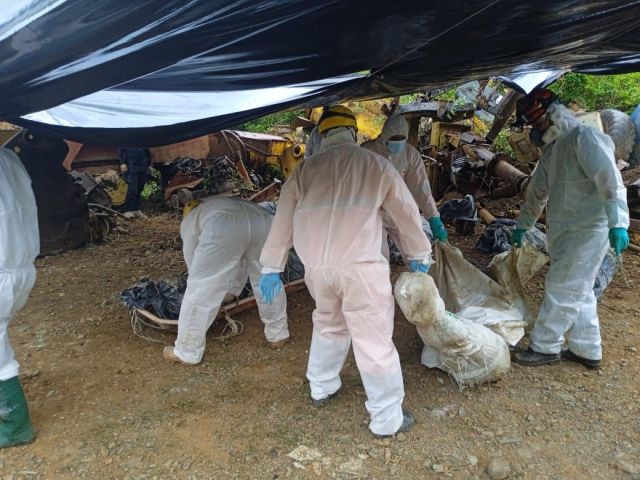
The promise was “see you on Tuesday”. Asia Torrealba waited and believed that this would happen. On Tuesday she would see her husband, but the hours passed and she still did not hear from him. Then came Wednesday, May 31st, when a colleague of her husband gave her the news.
By Pableysa Ostos/Correspondent lapatilla.com
“They called me and told me that there had been an accident in the mine. We went to the entrance of the Isidora mine company, because they told us that that’s where they were taking out the dead. They had already removed two bodies. We got there and we heard that it was at 3:00 in the morning when a colleague of theirs, one of the survivors, Wilson Villarroel, came out,” the woman recounted. Asia’s husband is one of the 12 deceased in the Talavera mine in El Callao, in the south of Bolívar State.
“With the help of his colleagues and firefighters, they were removed. In the part where they were there, they couldn’t get them out because they were already swollen, and through that hole they couldn’t get them out. They lasted a whole day and a whole night to be able to get them out,” Asia explained.
Wilson Villarroel was one of the five that made up one of the many crews that went to work at that mine on Monday, May 29th. Villarroel was the only survivor of his group. “He set them apart, pulled them out of the water, set them apart until they could be pulled out. He didn’t want to go out until they were taken out, but he was already dehydrated from the days he was in there and there was no oxygen, the oxygen had run out,” Asia said.
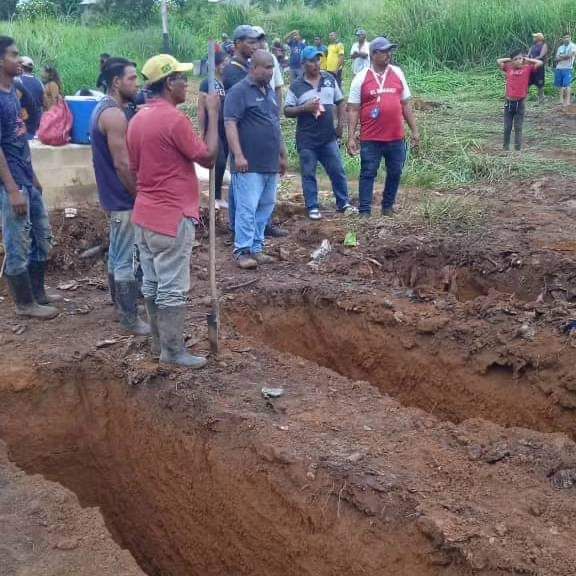
“They had to turn themselves in to the government to get out of there and I imagine that, out of fear, they did not want to turn themselves in, because every time the government caught them, they beat them up, they took them prisoner, from that mine. The times they were detained, they were put to do community work and then they were released,” denounced the young woman.
Asia stated that she had a son with Rolando De Jesús Aguinagalde and they are expecting another. “It wasn’t enough for us, but we did survive. This is the only place where there is work to do right now.”
Through tears, she remembers that Rolando told her to wait for him, that he was coming on Tuesday. “That was what he told me, and I had faith. I waited until Wednesday when the news spread. When I went to the scene of the events, I always held out the hope that he would come out alive.”
Looking for his brother
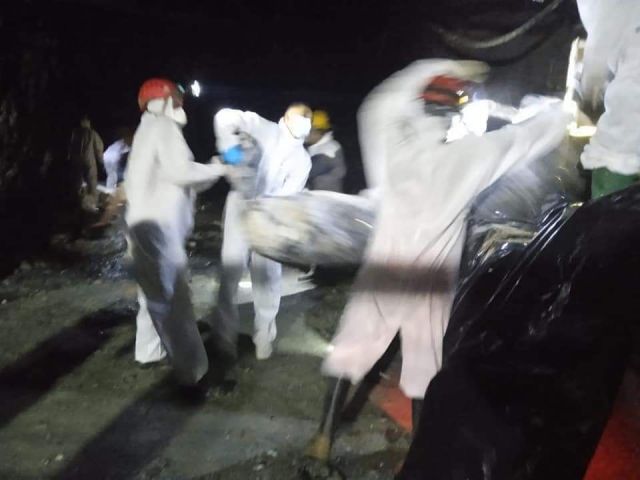
Alexander Morán knows what it is to work in the mines. But he has never performed these tasks in the Talavera mine, because of the danger. His brother was the one who regularly worked in that place. “We found out that he had drowned there. When I went down to get him out. I couldn’t see him, I couldn’t get to where he was. I took out 3 dead that were there and he was still up at level higher than I could not reach.
“They took him out this Saturday morning and delivered the body at 7:00 at night. He looked ugly, like all his companions, and there are still more than a few people down there, drowned, they could not get out,” said Morán.
His brother was Andrés Eloy Morán Barreto. “I wouldn’t wish this on any mining brother. This is an experience that I would not wish on anyone. Having a family member like that is tremendous. I was about two kilometers underground, the level where they died. The water rose too much, the entrance and exit were covered. This was what left them without oxygen. ” Alexander couldn’t get to where his brother was. His co-workers were the ones who recovered the body.
“He (Andrés) always worked in that mine. The people of the DGCIM (General Directorate of Military Counterintelligence) had taken him prisoner and he was detained for 6 months. He got out and kept going into that mine,” Alexander explained.
The miners agree that the Talavera mine is one of the most dangerous in El Callao, due to its depth (about 800 meters) and the landslides that occur in it.
The deceased
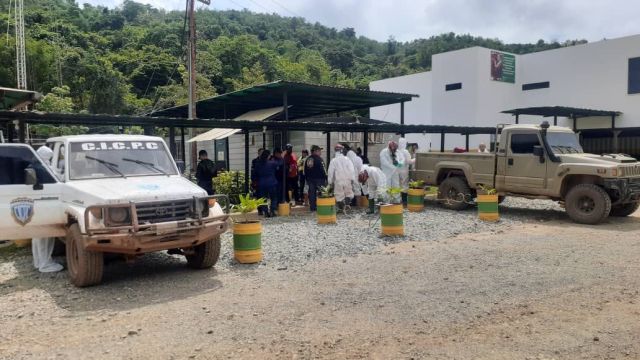
As indicated by the Secretary of Citizen Security of Bolívar State, General Edgar Colina Reyes, a multidisciplinary team was formed to attend to this unfortunate tragedy.
“They entered the mine that was closed a long time ago. The Talavera mine is located in the south of Bolívar. On Wednesday there were heavy rains that caused damage to the area,” Colina explained.
He added that: “some artisanal miners were working there. The mine was flooded and they ran out of oxygen and died of respiratory failure. That is the reason.”
On Saturday, June 3rd, they recovered seven lifeless bodies, and between Thursday and Friday, five bodies for a total of 12 dead.
The victims were identified as Herikson Jesús Rojas Malavé, 24 years old; Javier Enrique Rojas Malavé, 18 years old; Evelio Ramón Ortiz, 34 years old; Jorge Luis Aular Reyes, 19 years old; Robert José Cuevas Sotillo, 25 years old; and Yuset Moisés Escalona González, 28 years old.
Along with them also died Yerfenson José Romero González, 26 years old; Andrés Eloy Morán Barreto, 30 years old; Dimas Antonio Garcia Delgado, 24 years old; Rolando De Jesus Aguinagalde, 28 years old; Elvis Antonio Guerra, 25 years old; and Jesús Gabriel Díaz Aguilera, 33 years old.
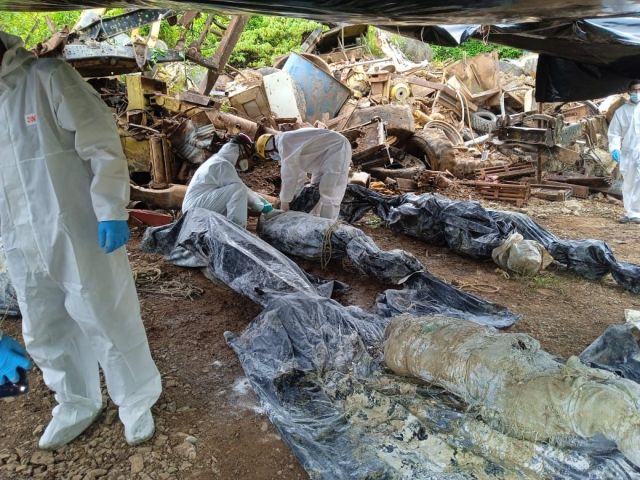
From Monagas
The Malavé Rojas brothers (Herickson and Enrique) lived in La Toscana, Piar Municipality, about 20 minutes from Maturín.
According to acquaintances of the victims, these youngsters came and went in the mine. They had been working in the mining areas for about two years.
The mother of these youths travelled to El Callao on the night of this Friday, June 2nd.
For their part, the spokesmen for the Bolívar State government assured that more than 120 miners were rescued by the security and rescue organizations that cover this area.
NGOs such as Transparency Venezuela have been denouncing the illegal mining that is carried out in the Bolívar State, a product of the economic crisis and corruption in the Orinoco Mining Arc Plan that “endorsed mining in 111,843 square kilometers of Bolívar State, an area that represents 12% of the national territory, a protected ecological zone, with the presence of more than 190 distinct indigenous communities.”

